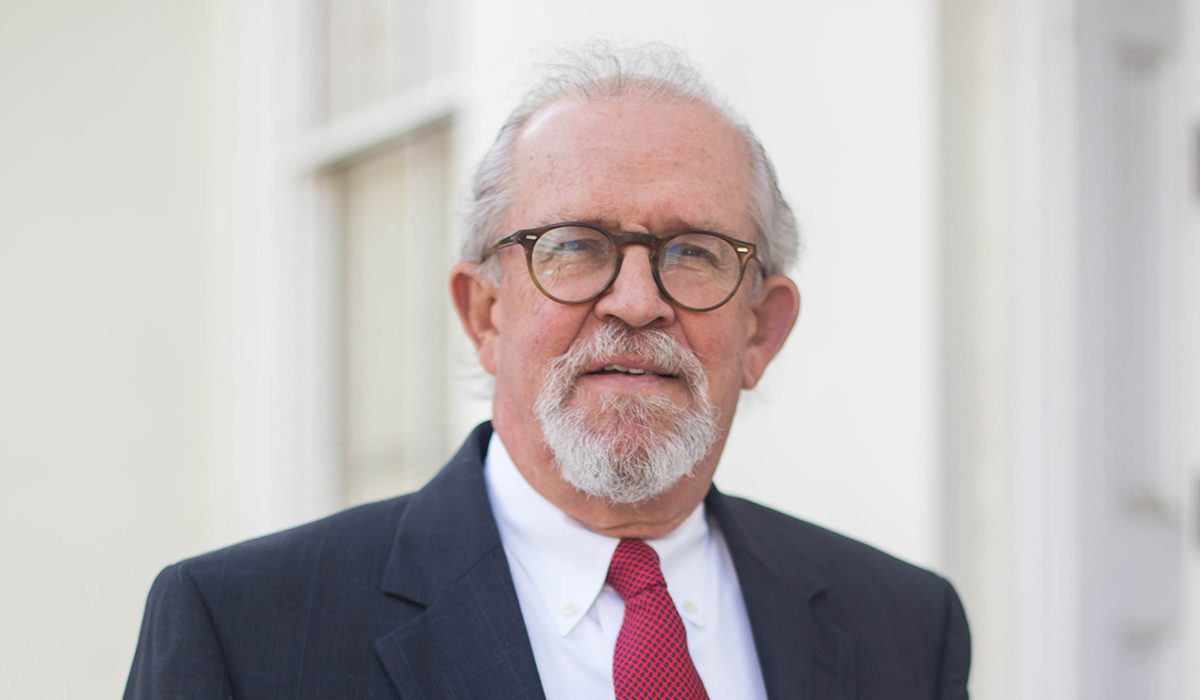
(Photo from RealClearWire by Darklanlan, Wikimedia Commons)
As Vince Bielski writes, some school districts are devising proposals to close under-enrolled facilities because of the financial burden they create. But nothing in public education is more controversial and difficult than closing a neighborhood school.
Call them “zombie” schools.
A significant but unknown number of public schools across the U.S., particularly in big cities, have lost so many students in the last half-decade that many of their classrooms sit empty. Gone is the loud clatter of students bursting through crowded hallways and slamming lockers.
The harm from these half-empty schools is inflicted directly on all students in a district. Without enough per-pupil state funding to cover their costs, they require financial subsidies to remain open, forcing district-wide cutbacks in academic programs.
“I visited one school that takes up an entire city block but there were only five classrooms used, plus a library, a computer room, and an afterschool room,” said Sam Davis, a member of the Board of Education in Oakland, California. “As our budget officer said, if you don’t have enough students for two teams to play kickball, there are a lot of other academic activities that are not going to be sustainable either.”
But nothing in public education is more controversial and difficult than closing a neighborhood school. The protests that recently flared up in cities like Oakland and Denver over proposals to shut low-enrollment schools, which also tend to be the worst academic performers in districts, are just a prelude of the reckoning to come, according to interviews with school leaders, researchers, educators, and charter officials.
The permanent closure of schools slowed drastically during the pandemic, even though many urban districts suffered a major exodus of students, with double-digit losses in New York City and Los Angeles. Many hollowed-out districts have temporarily sidestepped the tempest of shutting schools because Congress provided them with a historic windfall of pandemic-related funding and wide latitude in spending it, said Georgetown Professor Marguerite Roza, who directs the Edunomics Lab.
But the $190 billion lifeline – called the Elementary and Secondary School Emergency Relief Fund – ends next September. So school leaders are facing mounting pressure to shrink their oversized districts, setting up the next battleground over public schools.
“Many districts have too many schools, not enough kids, and are propping them up with federal relief funds,” Roza said. “And they haven’t laid the groundwork for closures when the funding goes away. Imagine the anger and protests when families learn suddenly that their schools are on the list to close.”
With aid flowing during the pandemic, districts shut an average of 810 schools a year in 2021 and 2022, according to the National Center for Education Statistics. That’s far less than the 1,350 average from 2011 to 2020, a difference that underscores the magnitude of the problem of zombie schools.
Why Schools Are Hard to Close
In the business and nonprofit sectors, wasteful spending is typically reined in by downsizing operations into fewer buildings and personnel. But public schools often find protection from the calls for efficiency. The first wave of pandemic-era proposals to shut schools in several districts has been countered by a formidable coalition of local advocates, forcing school boards to backpedal on their consolidation plans.
Families are leading the protests at school board meetings. Some have sentimental ties to neighborhood schools that go back generations, and others cite transportation issues in switching to another location that’s further from home. Teachers unions have joined the fight in Oakland and other cities, arguing that closures pose unfair labor practices. And racial justice advocates have succeeded in reframing the issue as a matter of equality rather than wasteful spending since nearly all the schools to be closed serve mostly black and Latino kids.
Districts like Seattle that aim to shutter schools often cite reasons that are out of their control. The birth rate has been dropping since 2007, according to federal data, chipping away at enrollment. Families are also leaving cities like Los Angeles and Chicago because of the rising cost of living and concerns over crime and homelessness. San Francisco, for instance, lost 7.5% of its population between 2020 and 2022, according to the census.
But public schools share in the blame. With test scores on the Nation’s Report Card in decline since 2012, families have been quitting traditional schools in search of a better education and a safer environment at charters, micro, and home schools. Charter enrollment, for instance, grew 7% from 2020 to 2022, while district schools lost 3.5% of students, according to the National Alliance of Public Charter Schools.
School districts can’t do anything about the birth rate. But many of them do control the fate of charters. In Los Angeles and other cities facing closures, school boards that formerly encouraged the expansion of charters have grown hostile toward them and blocked their expansion, in part to preserve their own enrollment.
How Zombie Schools Hurt Education
Some districts are now devising proposals to close under-enrolled facilities because of the financial burden they create.
Even a school at half capacity needs a principal, support and food service staff, custodians, and sometimes a nurse, librarian, and counselor. Education is highly labor-intensive, with compensation comprising at least 85% of a school’s expenses, Georgetown’s Roza says.
Since zombie schools don’t cover their own expenses, superintendents have to pull resources from other schools and programs to subsidize them. Funding for art, music, special education, and advanced placement classes may be cut, affecting students throughout the district.
“In the end, districts have to spread resources too thinly, across too many buildings, and nobody gets served well,” Roza says.
In Denver, Superintendent Alex Marrero detailed the financial benefit of shutting schools in a memo to families last year. In proposing to close 10 out of about 155 traditional and innovation schools – one of which had only 93 students – Marrero said the cost to the district to subsidize them was $5 million annually. That money was pulled from healthier schools and programs.
But if the 10 skeletal schools were closed, the superintendent added, the district could hire an additional 50 full-time employees to benefit students.
The financial logic of school closures has won the day in some districts. Indianapolis announced it was shutting six schools in May to promote the efficient use of taxpayer funding and higher student achievement. St. Louis said it would lock the gates on eight schools, some of them half-empty, two years ago.
The city of Jackson, Miss., may approve a sweeping closure plan in December. The superintendent is calling for the elimination of more than a quarter of its 55 district schools after community outcries scuttled plans over the years to close under-enrolled facilities.
“The closures are long overdue and I think they will happen,” says Rachel Canter, executive director of Mississippi First, a nonpartisan education policy group. “The reality is that the population has declined so much that Jackson cannot support the number of schools it has and provide a quality education.”
Opponents Prevail in Oakland
But in many cities, schools that are almost empty shells are protected from closing. Consider the heated battle in Oakland.
The performance of the Oakland school district, which is two-thirds Latino and black, is among the worst in California: Just 25% of students meet or exceed math standards, and only 33% reach this bar in English.
The poor results have contributed to a steady drop in enrollment to about 34,000 last year from more than 50,000 two decades ago. Many students left for charters, which now educate about a quarter of students in Oakland.
To improve performance, the district had set up a number of small schools with about 400 kids. That provided enough funding for a couple of teachers at each grade, as well as art and music programs, to create a rich learning environment. That’s now mostly gone.
“Several of our campuses have dwindled to what I call micro schools that are each under 250 students, with only one class at every grade level and without much enrichment,” said Davis, the school board member. “We no longer have that robust environment for teachers or students.”
The urgency for Oakland to close schools, in addition to buildings it shut years ago, is underscored by the state takeover of the district in 2003 to prevent bankruptcy. The district is still paying off the bailout loan, so wasting money on under-enrolled schools could prompt another intervention by its Alameda County overseer.
To stave off more financial trouble, the board approved a plan in 2022 to shut or merge 11 schools, beginning with two that year. The savings would give the district a chance to reinvigorate the remaining schools with more teachers and programs.
But weeks of community demonstrations and a hunger strike by a group of protestors culminated in the election of new board members who opposed school closures. Two of the winners were backed by the Oakland Education Association teachers’ union.
In January, the new board hastily overturned the earlier vote on closures, saving five schools from shuttering without considering the financial impact in apparent violation of its own policy.
Sasha Ritzie-Hernandez, who has numerous relatives attending Oakland schools, helped rally thousands of protesters to keep them open. She says the schools targeted by the board were disproportionally black and low-income and questioned whether the savings would actually benefit students or get absorbed in what she considers a bloated district bureaucracy.
“I oppose closing schools,” said Ritzie-Hernandez, who lost a race for an open board seat in November. “Families in Oakland didn’t feel like they were involved in the decision-making process, so we mobilized parents to the board meetings because there was not robust community engagement.”
The decision to keep the schools open adds at least $5 million a year to the district’s budget, forcing the board to consider across-the-board cuts to its 78 schools, which could only add to their struggles.
Up Next: Denver
The Denver school district is now in the throes of a closures fight after enrollment has suffered from a declining birth rate and gentrification.
While Latinos make up the biggest group of students, their families are having fewer children. At the same time, rising housing costs are pushing lower-income families out of the city, and young couples without kids are moving in. The district is becoming whiter and smaller.
Enrollment peaked in 2019 at about 94,000 students and has fallen each year to 89,000 in 2022, according to the district. It projects it will lose thousands more students in the next few years.
When birth rates fall, elementary schools are emptied first. At the beginning of the year, the Board of Education expected that 15 district-run elementary and middle schools would have fewer than 215 students. Two elementary schools would have fewer than 120 students and not enough incoming kindergarteners to form a viable class.
After more than a year of gathering community feedback and analysis by an advisory committee, Superintendent Marrero, in the fall of 2022, recommended closing 10 of the 15 schools with fewer than 215 students. Nine of them were predominately Latino and black.
In the racial politics of Denver, the plan drew swift blowback from families and some members of the school board, which was entirely backed by the influential Denver Classroom Teachers Association. Vice President Auon’tai Anderson declared in the media that the closure plan was a “tactic of white supremacy culture” – despite the fact that it was developed by a Latino superintendent.
Bowing to pressure, several weeks later, Marrero was expected to cut the list in half to five schools, targeting those that required the largest subsidies. Instead, he chopped the list to just two schools.
Still, that wasn’t good enough. The school board rejected the slimmed-down plan, saying more input from the community was needed. A few months later, in early 2023, as the financial burden of zombie schools sank in, the board finally acted, closing just three of them.
What will happen to the rest of the under-enrolled schools is anyone’s guess. This month, Denver voters signaled they wanted a more moderate school board, electing three new members – none of them backed by the teachers union – to the seven-person panel. One new member is the former CEO of a charter network in Colorado who has expressed support for closing under-enrolled schools.
If Denver shutters more schools, it will likely happen slowly over many years, says William Anderson, a former public school teacher in the city who’s now on the faculty at the University of Denver.
“Maybe they close three next year, and see if it’s working the way they expected, and then they tweak the process before closing three more,” he says.
Charters on the Firing Line
As a subplot in the battle over vacated schools, districts in Oakland and Denver have rejected several requests by charters to expand. While that may help protect a district’s funding, it’s not good for families looking for better options for educating their children.
Charters, which are publicly funded but privately managed, have been particularly effective in accelerating the academic growth of low-income students, outperforming traditional schools by a significant margin, according to a 2023 study by the Center for Research on Education Outcomes (CREDO) at Stanford.
This is true in Denver, according to a separate CREDO study of the city, where charters make up about a quarter of all public schools. DSST, a charter network in Denver with waiting lists for many of its schools, stands out. It won national acclaim for the outstanding academic results of its disadvantaged students, 80% of whom are Latino or black. All of its graduates have been admitted to college since 2008, according to its website.
Yet DSST’s expansion in Denver has come to an abrupt halt. It last started a school in 2021, and that required the charter to appeal to the state after the school board sought to delay the opening for years. Since 2020, the Denver board has received three requests for new charter schools and rejected all of them, citing the potential difficulties they would have in recruiting students and other reasons, according to board memos.
“The local school board has been controlled by members who are hostile to authorizing new charter schools,” says Todd Ziebarth, senior vice president for state advocacy at the National Alliance for Public Charter Schools. “While Colorado’s law does create an appeals process, the time-consuming nature of it can serve as a deterrent to growth.”
In Oakland, the school board has rejected two charter proposals it has received since 2020: a new school was denied because it didn’t have a sound educational program, and an expansion was shot down because of the financial impact on the district from losing more students to the charter, said Davis, the board member.
Even Yu Ming, the top performing K-8 public school in Alameda County, which includes Oakland, encountered resistance in its request to grow its enrollment in the city. Students in the Mandarin immersion charter—30% of whom are low-income—performed about three times better than Oakland students on a 2022 state test, an extraordinary margin. Although Yu Ming has a waiting list, the Oakland board passed a resolution to compel the county, which controls the charter, to allow it to expand into a neighboring city.
“The problem is that if we expand enrollment at charter schools, including the highly successful ones, that contributes to the decreasing enrollment in the district and leads to us closing more neighborhood schools, which is very painful,” Davis said.
But the benefit to students who would have enrolled in an expanded charter like Yu Ming could be significant. One of the most effective ways to deal with the chronic academic problems of low-income students is simply to put them in a better school. That alone makes a big difference, according to a CREDO study of school closures in 26 states.
The research showed that students – particularly blacks and Latinos – who transferred to superior schools made greater academic gains than their peers who remained in poorly performing schools. But a little less than half of the displaced students were moved to higher quality schools, which are in short supply in many cities.
Margaret Raymond, the CREDO director, says local boards closing facilities should also focus on finding ways to transfer students to better schools, including charters, even if districts take a financial hit.
“The lesson is that choosing the worst schools to close is probably a good thing, but that’s only half the exercise,” Raymond said. “Districts also have to figure out how to marshal those kids into settings where they have a chance of recovering academically.”
#####








